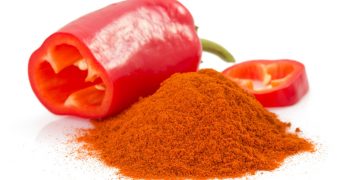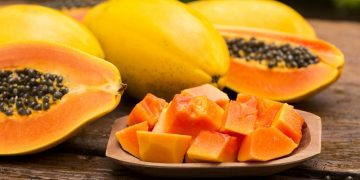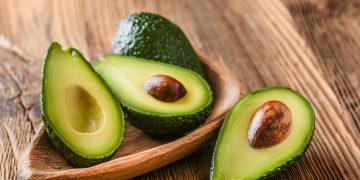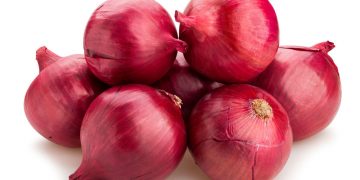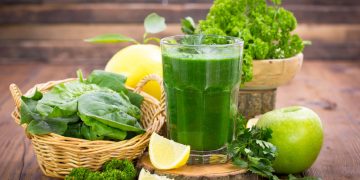Did you know that cholesterol is actually an essential element in the body? Produced by the liver, it’s in all nerves function properly and is required for the production of many hormones (including sex hormones like testosterone) as well as Vitamin-D. It’s also important for brain function and for the proper working of neurotransmitters. Cholesterol may even have a role in the body’s ability to resist infection.
So why all the fuss about lowering your levels? Well, it’s like this; cholesterol is transported in the bloodstream packaged with protein in the form of lipoproteins. There are two main forms of lipoprotein in the blood: low-density lipoprotein-cholesterol (LDL) and high-density lipoprotein cholesterol (HDL). Traditionally, LDL has been said to be chiefly responsible for depositing cholesterol on the inside of the arteries, leading to cardiovascular disease such as heart disease and stroke hence why it is often referred to as ‘bad cholesterol’. HDL is referred to as ‘good cholesterol’ is associated with clearing cholesterol from the inside of the arteries.
What’s in a number?
Over the years, our understanding of the connection between diet, LDLs and heart disease has changed. We now know that various types of saturated fats and carbohydrates have different effects on the amount and size of LDLs. And, while heart disease may not necessarily be associated with total cholesterol levels, it is definitely connected to having lots of LDLs that are smaller and denser. The larger, ‘fluffier’ LDLs may actually be heart protective! So, you may have a high LDL count, but the majority of them may be of the protective, ‘large and fluffy’ variety. On the flip side, even if you have normal cholesterol levels, the majority of LDLs could be of the risky, ‘small and dense’ variety.
Basically, LDL particle number and size is now accepted as one of the strongest markers of heart disease risk – potentially even more than total cholesterol. Other markers such as Lp9a) and homocysteine are strongly associated with cardiovascular risk. This may be why a study published in 2009 found that almost three-quarters of patients in hospital with heart disease has LDL-cholesterol levels that would be seen as acceptable, or even low, in a cholesterol test.
So am I at risk?
Currently, the government recommends total cholesterol levels of healthy adults should be 5mmol/L or less, with LDL levels being 3mmol/L or less. If you are considered at high risk (if you have high blood pressure, diabetes or a family history of early heart disease) it’s recommended to have a total cholesterol level of 4mmol/L or less, with levels of LDL being 2mmol/L or less. As triglyceride levels are also linked to cardiovascular disease, a level below 1.69mmol/L is considered ideal. Similarly, high LDL levels (above 1.56mmol/L) are said to protect your heart, and your HDL to cholesterol ratio is a good way to assess your risk. If you have increased levels of cholesterol, it may be in part because of increased inflammation in your body.
The cholesterol is there to do a job: to help your body heal and repair. So you see, simply lowering your cholesterol intake may not be the answer…
Stating drugs, often prescribed to lower cholesterol, work by inhibiting an enzyme in your liver that’s needed to manufacture the substance. Unfortunately, as a result, they deplete your body of coenzyme Q10 (CoQ10), which is beneficial to heart health and muscle function, and essential for energy. Statins may also cause a range of side effects, such as muscle aches and pains, dizziness, cognitive problems (memory loss) and depression. If you are taking them, you might like to supplement with CoQ10 daily.
The heart-healthy diet
Our lifestyle and diet can have a profound effect on our cholesterol and triglycerides. But simply lowering your cholesterol intake from foods such as eggs and prawns isn’t enough. This is because 75 percent of your cholesterol is produced by your liver, which is influenced by your insulin levels. So, if you optimise your insulin levels, this can help regulate your cholesterol levels. And the best way to do this? Simply by exercising and changing your diet.
It would be worth increasing your intake of protective omega 3 fats, found in oily fish, krill oil, and organic grass-fed meats.
Foods that increase your insulin levels (high glycemic index foods, so refined carbohydrates, grains, sugars, alcohol and so on) will also contribute to high cholesterol by making your liver produce more of it. Switch instead to a low carbohydrate diet, reduce alcohol consumption, stop smoking and cut out refined carbs, sugars, and processed fats.
Eating more fruit and vegetables, high in antioxidants, vitamin C and flavonoids such as resveratrol (found in berries and grapes) may also help protect your heart.
Finally, remember to look at your emotional health. Stress can have a profound effect on your body – increasing inflammation, blood sugar imbalances, and cholesterol – so including ways to combat emotional stress is a sensible health strategy. Combine that with healthy eating and you are on to a winner.
Cholesterol Friendly foods
Plant Sterol-rich functional foods: These foods contain plant sterol and stand shown to reduce LDL cholesterol. Try Benecol and Proactive drinks.
Fibre-rich foods: Fibre from beans, pulses, oat bran, rice bran, flaxseeds help to bind to cholesterol and excrete it from the body. Aim for a minimum of 18-24g fiber daily. Try adding beans and pulses to dishes, stir ground flaxseed in smoothies and enjoy porridge for breakfast.
Soya: Soya milk, yogurts, tofu, soy nuts, tempeh and natty all aid excretion of cholesterol via the liver. For the most benefit, aim to consume around 25g soy protein daily.
Nuts: Snacking on nuts daily (25g-50g) such as walnuts, pistachios and almonds have been identified to reduce cholesterol levels. They contain plant sterols, monounsaturated fats, fiber, and vitamin-E.
Olive oil, avocado, rapeseed oils: Rich in monounsaturated fat, polyunsaturated, and antioxidants, these healthy fats have been shown to lower total cholesterol and may help improve HDL levels too.
Oats: Oats are rich in soluble fiber and contain beta gluons which aid cholesterol excretion. Try snacking on oats cakes, and eating muesli or porridge for breakfast.
Garlic: Garlic has been shown to lower cholesterol, reduce blood pressure and thin your blood. Include 2-4 cloves daily to reap the benefits.
Fish oils: Oily fish such as salmon, mackerel, sardines, trout are rich in omega 3 fats, which may help lower high triglycerides, increase HDL and reduce your risk of blood clots. Try eating three portions each week.
Green tea: High in antioxidants! Studies suggest green tea can lower cholesterol by 2-5 percent, but you may need to drink up to 10 cups a day for noticeable effects.
Supplements for Cholesterol
Niacin, B3: Known to raise HDL, lower LDL and improve lipid particle size too. It can cause a ‘niacin flush’ but these symptoms often decrease with continued use.
Fish or Krill oil: Fish oil contains the omega 3 fatty acids, Docosahezanoic Acid (DHA), and Elcosapentanoic Acid (EPA). DHA and EPA are recognized for their ability to improve triglyceride levels and support cardiovascular health. DHA has been shown to raise HDL.
Magnesium: Magnesium may support HDL levels through its role with enzymes involved in lipid metabolism. It also prevents the muscle cells both in the arteries and heart from getting too tense, improving heart muscle function and blood pressure. Try transdermal sprays for an easy, effective form of supplementation.
Hops and plant sterols: Various supplements contain hops – plant sterols are shown to help lower cholesterol.
Soy isoflavones: Soya’s main cholesterol-lowering ingredients, isoflavones, are available as supplements.
Beta glucans: A soluble fiber found naturally in oats shown to lower total and LDL cholesterol and raise HDL.



